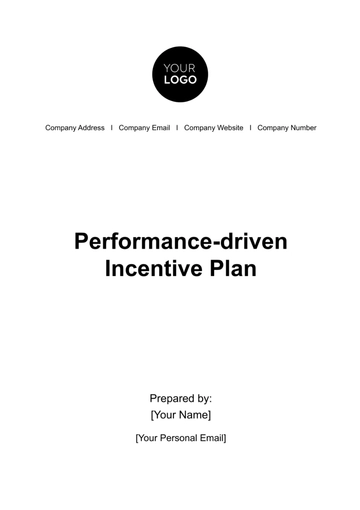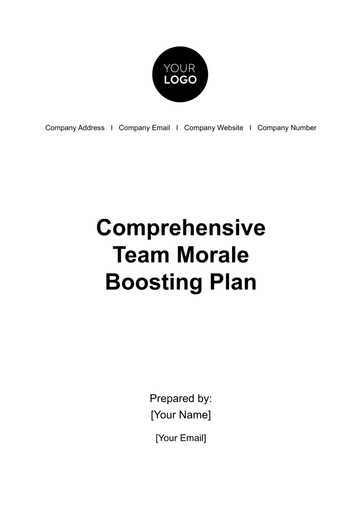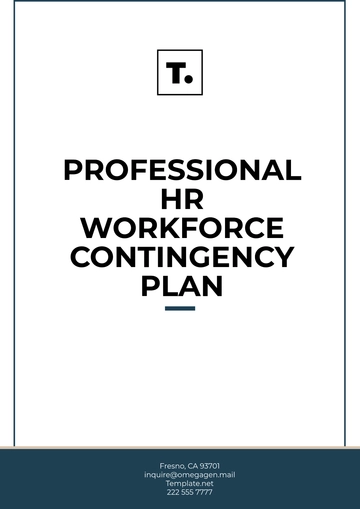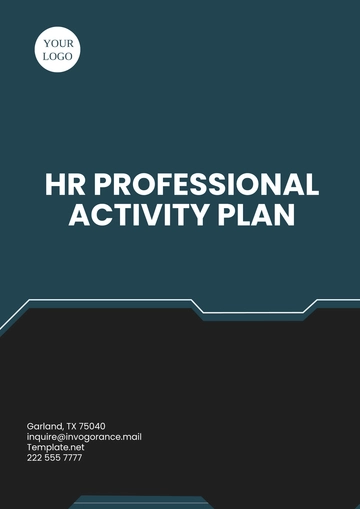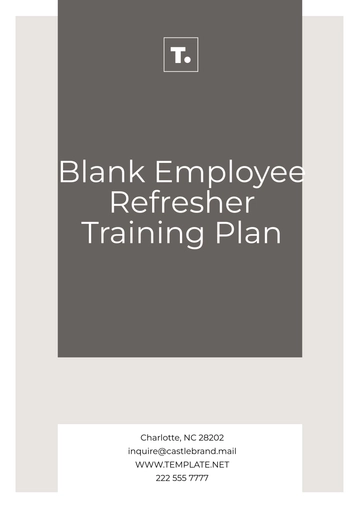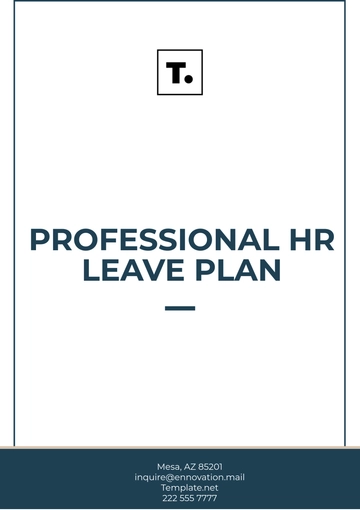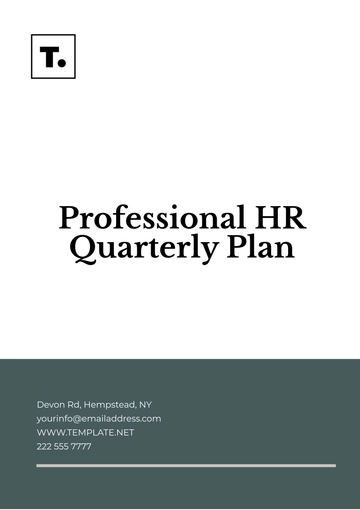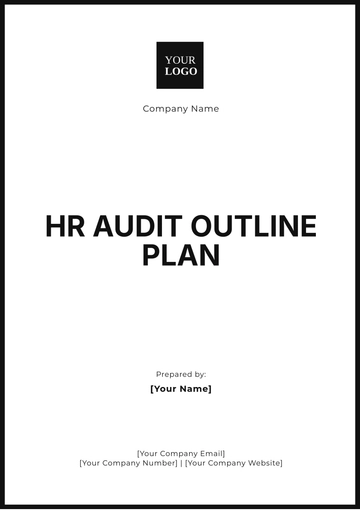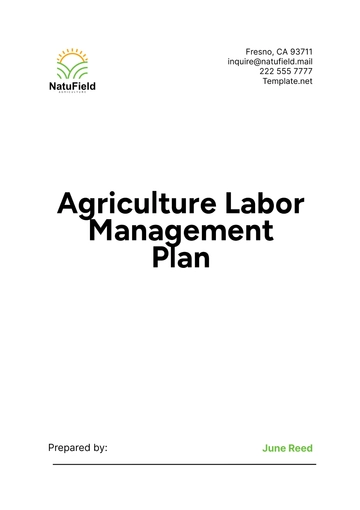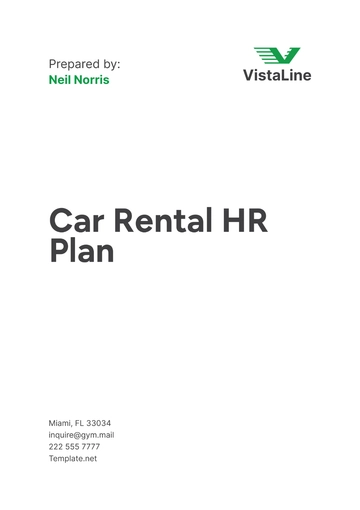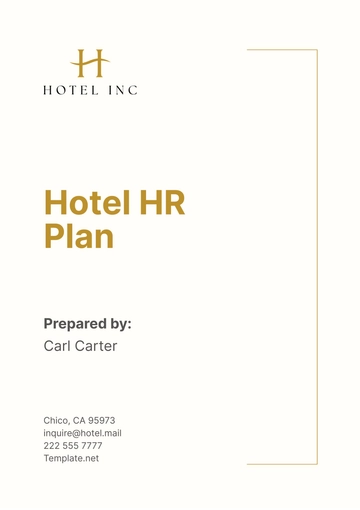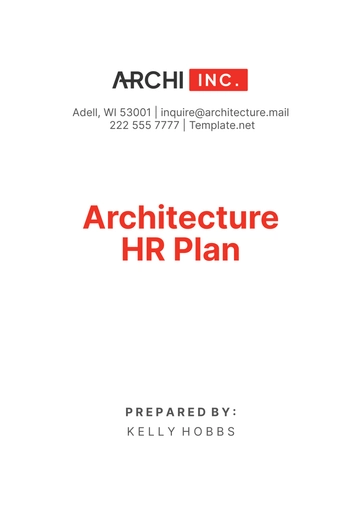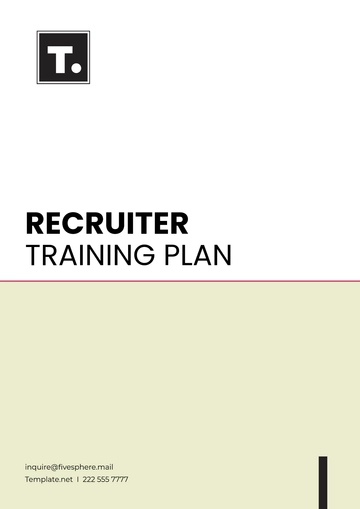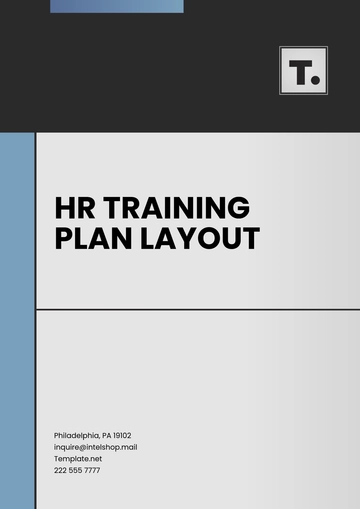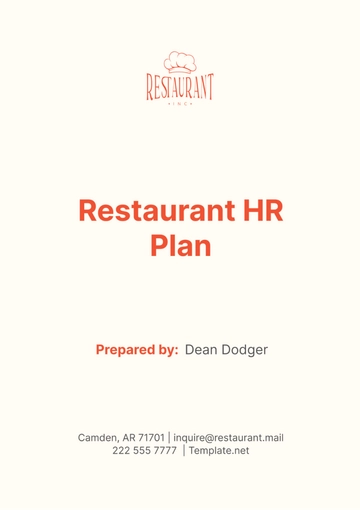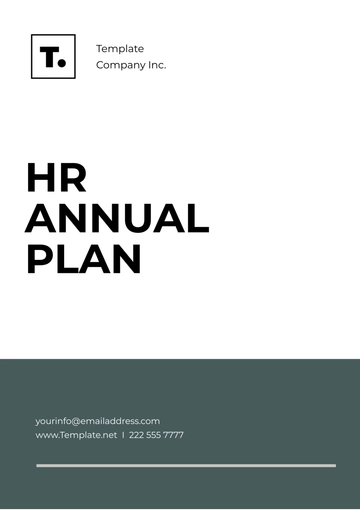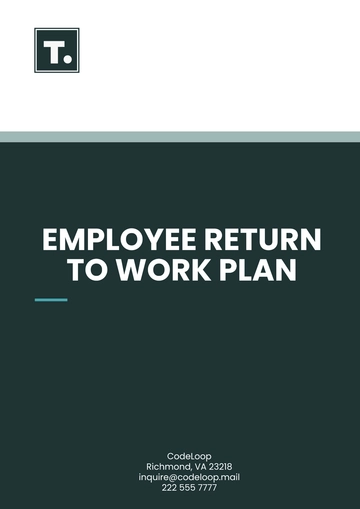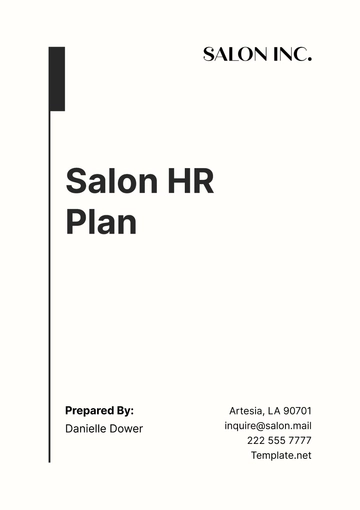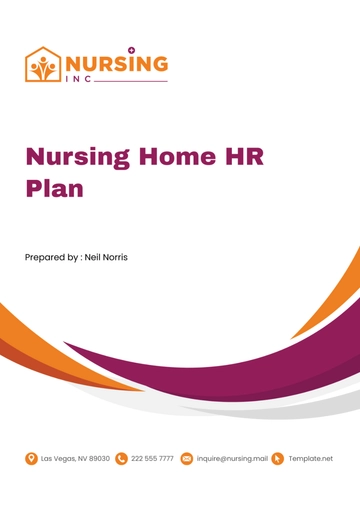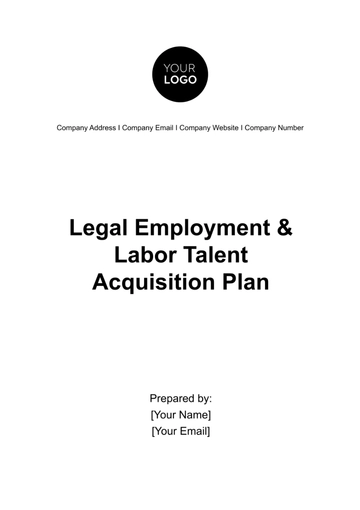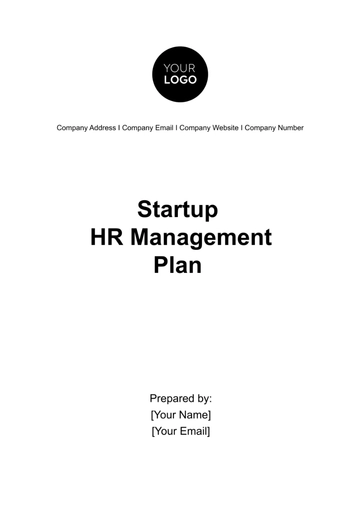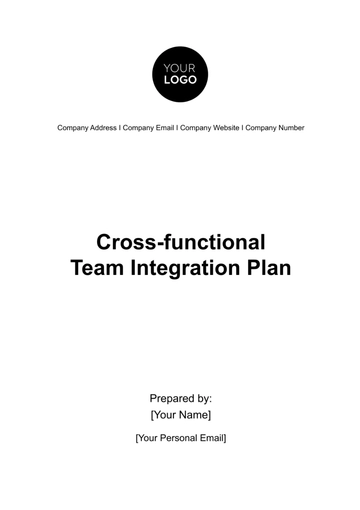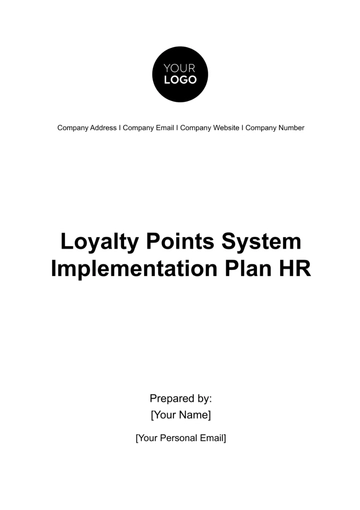Free Pandemic Workplace Response Plan HR
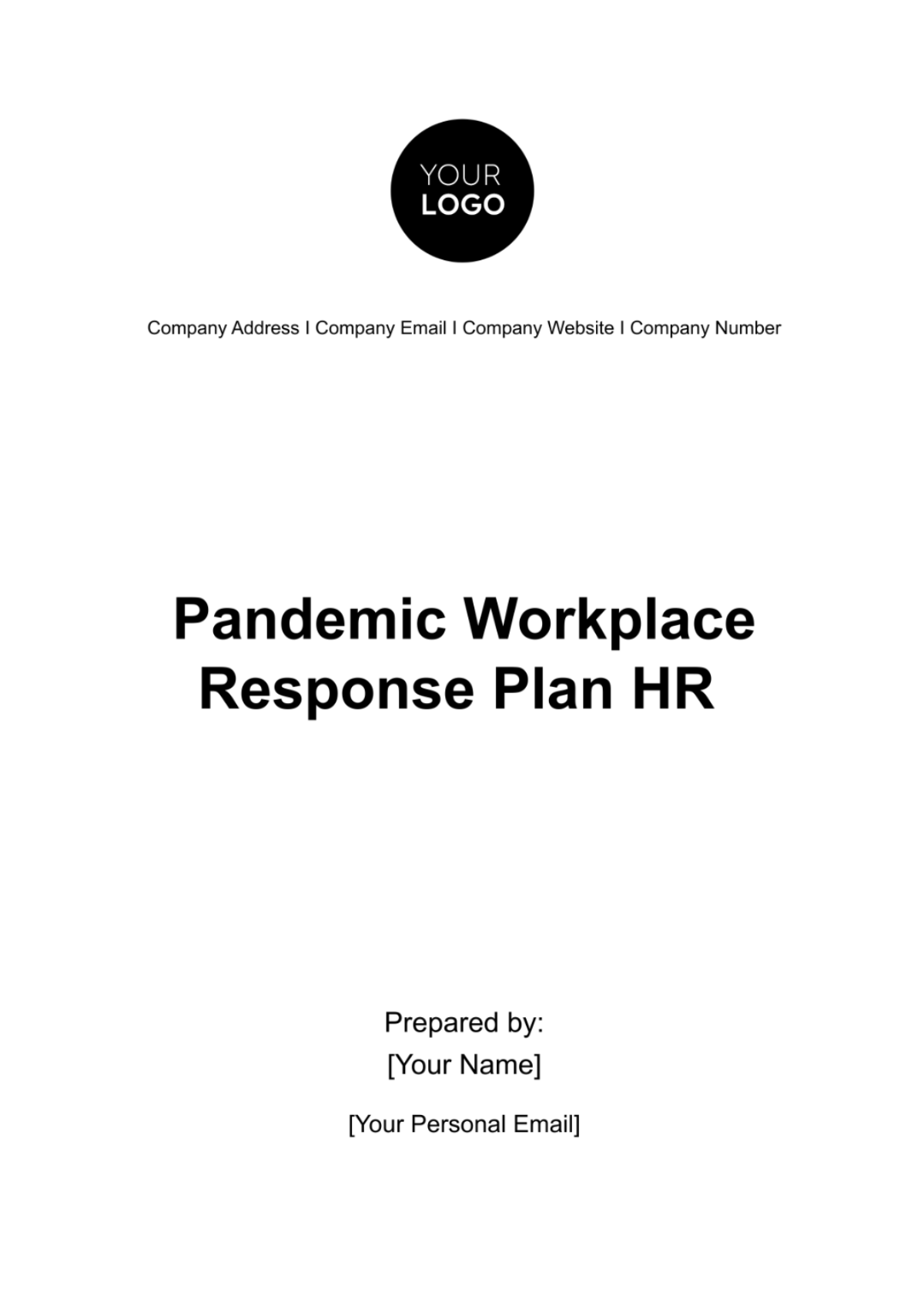
I. Introduction and Objectives
In an interconnected and dynamic global community, pandemics are a looming threat that can profoundly disrupt economies, societies, and daily life. Beyond the immediate health impact, such crises can jeopardize organizational sustainability and employee welfare. Preparedness, thus, is not merely an option but a necessity. The recent COVID-19 pandemic, which affected millions worldwide and had significant socio-economic implications, underscores the importance of a strategic response framework for workplaces.
Purpose and Scope
Purpose: The Pandemic Workplace Response Plan (PWRP) serves as a compass to navigate the treacherous waters of potential pandemics. It details [Your Company Name] concerted strategy to mitigate the impact of a pandemic by focusing on both human and operational elements, thereby bridging the gap between immediate crisis response and long-term recovery.
Scope: While pandemics are indiscriminate, our plan is precise. It casts a broad net, encompassing everyone who interacts with our organization—from employees to contractors and even visitors. It is built on a foundation of extensive research and consideration, accommodating a range of pandemic scenarios. Notably, the documented strategies and protocols are rooted in the lessons learned from previous public health crises, both local and global.
Objectives
To distill the essence of our Pandemic Workplace Response Plan, [Your Company Name] spotlight three overarching objectives:
Employee Health and Safety: At the heart of our organization is our people. Their health and safety are paramount. As such, our response strategy places a premium on deploying preventive measures, fostering a culture of rigorous hygiene, and creating an environment that facilitates social distancing—all to shield our staff from potential health threats.
Business Continuity: A pandemic does not absolve us of our commitments—to our stakeholders, clients, and society at large. Therefore, maintaining the momentum of critical business operations, even when the tides are against us, is crucial. Our plan is equipped with contingency strategies to ensure that our services remain uninterrupted, and our business's heartbeat remains steady.
Compliance: Navigating the maze of pandemic-related regulations can be daunting. However, our commitment to adherence remains unwavering. Our PWRP is designed to align seamlessly with local, state, and federal guidelines, ensuring that our pandemic response is both effective and compliant. Regular reviews and updates to our strategies will be conducted to remain abreast of changing regulations.
By integrating these objectives, we aim to fortify our organization against the unforeseen challenges that pandemics present, always prioritizing our collective well-being and sustained progress.
II. Risk Assessment and Preparedness
In a world that is often characterized by its unpredictability, risk assessment, and preparedness serve as [Your Company Name] guiding beacons, illuminating the path to proactive, informed decision-making. Especially in the face of pandemics—events of immense scale and profound implications—it is imperative to chart our course with precision and foresight. In this section, we delve into our systematic approach to gauging potential risks and fortifying our organization against them.
Pandemic Risk Assessment
Pandemics are multifaceted, and their effects are often cascading, touching various facets of an organization. To build resilience against such pervasive threats, we've adopted a holistic risk assessment methodology.
Identifying Potential Sources of Infection: It's essential to cast a discerning eye on our workplace's physical and operational landscape. By scrutinizing points of congregation, ingress and egress routes, and communal areas, we can pinpoint zones of potential infection transmission. Moreover, frequent interactions with external entities, such as suppliers or clients, are also areas warranting careful examination.
Evaluating the Vulnerability of Business Units: Not all sections of an organization bear equal risk. Some departments, due to their nature—be it frequent face-to-face meetings or essential physical presence—may be more susceptible. Our risk assessment accounts for these nuances, ensuring that mitigation strategies are tailored to the specific needs of each business unit.
Assessing Employee Health Impact: Our employees are our most valued assets, and their well-being is at the forefront of our considerations. We evaluate potential health outcomes based on various pandemic scenarios, considering factors like the virulence of the disease, employee demographics, and the availability of medical interventions.
Emergency Preparedness
Awareness without action is ineffectual. Building on our risk assessments, we've forged a robust framework for emergency preparedness, ensuring that we're not just aware of the challenges but are primed to tackle them head-on.
Emergency Response Team (ERT): This dedicated team is the nexus of our emergency response operations. Comprising individuals from diverse backgrounds and expertise, the ERT is trained to handle pandemic situations adeptly. They spearhead the development of action plans, coordinate response efforts, and serve as the primary conduit for all pandemic-related communication.
Communication Strategies: In times of crisis, clear and consistent communication can be the difference between chaos and coordination. We've designed communication blueprints that cater to various audiences—be it internal teams or external stakeholders. These strategies ensure that all relevant parties are well-informed, aligned, and responsive.
Supplies and Resources: Preparedness is as much about mindset as it is about material. Recognizing this, we have instituted protocols to maintain a strategic reserve of essential resources. This includes Personal Protective Equipment (PPE), sanitization materials, and medical resources. Regular inventory checks and liaisons with suppliers ensure that we're never caught off guard, and our employees always have access to protective measures.
Through rigorous risk assessment and proactive preparedness, we aim to create an organizational environment that is not only resilient in the face of pandemics but also fosters a culture of safety, solidarity, and sustainability.
III. Response and Mitigation Strategies
Navigating the tumultuous waters of a pandemic necessitates a well-charted course, guided by data, experience, and foresight. Our Response and Mitigation Strategies aim to provide this course, offering structured, evidence-based protocols to confront the myriad challenges presented by a public health crisis. This section unpacks our multifaceted approach, designed to protect our workforce, uphold our operational integrity, and contribute to the broader goal of societal well-being.
Pandemic Response Phases
Much like navigating a storm, tackling a pandemic is not a linear journey but a progression through distinct phases. Recognizing this, we've delineated our response into targeted stages:
Prevention: Prevention is the first line of defense. It is about creating a bulwark against potential threats. We emphasize ongoing employee education to keep them apprised of the latest safety protocols and advisories. Travel restrictions are calibrated based on evolving hotspots and transmission patterns, thereby limiting exposure.
Containment: Should the initial defensive line be breached, containment becomes crucial. It's about localized responses to mitigate wider spread. Actions include immediate isolation of infected employees and rigorous contact tracing to identify potential exposures, ensuring that the circle of infection is restricted and managed.
Recovery: As the storm subsides, the journey of restoration begins. The recovery phase is characterized by a phased return to standard operations. It's crucial to remember that 'normalcy' is not an immediate switch but a graded return, underpinned by vigilant monitoring.
Employee Health and Safety
Our workforce is our bedrock, and their well-being is non-negotiable. We've instituted several measures to ensure their health and safety:
Hygiene Practices: Beyond the basics of handwashing and respiratory etiquette, we strive to cultivate an environment where hygiene becomes second nature. Posters, regular reminders, and provision of hand sanitizers at strategic locations underscore our commitment to hygiene.
Social Distancing: Our facilities have undergone thoughtful redesigns, ensuring that employees can maintain safe distances. This includes workspace rearrangements, controlled common areas, and staggered shift systems, reducing crowding at any given time.
Personal Protective Equipment (PPE): Merely providing PPE isn't enough—it's essential that employees use them correctly. To this end, we've introduced comprehensive training sessions, ensuring that every employee understands the nuances of PPE use.
Remote Work and Business Continuity
The modern workplace is no longer confined to four walls. In the face of a pandemic, our ability to adapt becomes our greatest asset.
Remote Work: Recognizing the value of flexibility, we've invested in robust remote work infrastructure. This means not only providing the necessary tools but also fostering a supportive remote culture, ensuring that our employees feel connected, even when physically apart.
Critical Functions: Continuity hinges on identifying and safeguarding critical functions. We've undertaken meticulous audits to earmark these pivotal operations, developing contingency plans to guarantee their uninterrupted performance.
Supply Chain: A business doesn't operate in isolation. Our interconnectedness with suppliers and partners means that we're only as strong as our weakest link. Proactive assessments of our supply chain, coupled with backup plans and alternative sourcing strategies, ensure that we remain operational, even when external circumstances are less than favorable.
By intertwining proactive measures with reactive strategies, we strive to forge a future where our organization remains resilient, responsive, and responsible, even in the face of the most daunting challenges.
IV. Communication and Employee Support
In the realm of maintaining effective communication and providing robust support to our employees, our organization has developed a comprehensive set of protocols and services aimed at fostering a secure and informed work environment. This section delves into the specifics of our Communication Protocols and Employee Support Services, highlighting our commitment to employee well-being and business continuity.
Communication Protocols
Transparent, timely, and accurate communication is not a mere obligation but a vital need, especially during unpredictable situations.
Regular Updates: One of the cornerstones of our communication strategy is the delivery of regular updates. In today's fast-paced world, staying informed is paramount. We ensure that employees receive timely and relevant information through a variety of channels, including email, our intranet platform, and regular meetings. These updates not only keep our workforce informed about the latest developments but also reinforce our transparency and commitment to their safety.
Emergency Contacts: In times of crisis, having a readily accessible list of emergency contacts is crucial. Our organization maintains a comprehensive list of emergency contacts to ensure that employees can report illness or seek assistance swiftly and efficiently. This proactive approach helps in addressing emergency situations promptly and provides employees with the peace of mind that they are supported in times of need.
Training and Education: Knowledge is power, and in the context of pandemic risks, this becomes particularly relevant. We conduct regular training sessions to educate our employees about pandemic risks, prevention measures, and response procedures. These sessions are designed to equip our workforce with the necessary information and skills to navigate challenging situations confidently. By fostering a culture of preparedness, we enhance the resilience of our organization and empower our employees to make informed decisions.
Employee Support Services
Mental Health Resources: Recognizing the importance of mental health in today's demanding world, we prioritize the well-being of our employees. To this end, we provide access to mental health resources and counseling services. Our commitment to supporting employee mental health extends beyond words, as we ensure that they have the means to seek help and cope with the challenges that may arise during trying times. By promoting mental well-being, we strengthen our workforce and enhance their ability to thrive both personally and professionally.
Employee Assistance Programs (EAPs): Our dedication to employee support is further demonstrated through our Employee Assistance Programs (EAPs). We make certain that all employees are not only aware of these programs but also have easy access to them. EAPs provide a valuable resource for additional support, offering guidance and assistance for a wide range of personal and professional challenges. Ensuring that our employees are aware of and utilize these programs underscores our commitment to their holistic well-being.
Sick Leave Policies: In the interest of public health and the well-being of our employees, we have implemented flexible sick leave policies. These policies are designed to encourage employees to prioritize their health without the fear of reprisals or negative consequences. By fostering a culture where employees feel comfortable taking sick leave when necessary, we not only protect the health of our workforce but also contribute to the overall resilience of our organization during challenging times.
In conclusion, [Your Company Name] robust Communication Protocols and Employee Support Services underscore our unwavering commitment to the well-being and resilience of our workforce. Through transparent communication and a comprehensive suite of support services, we aim to empower our employees, ensuring they have the knowledge, resources, and assistance needed to navigate both everyday challenges and unexpected crises. This commitment is not just a statement but a core part of our organizational culture, reflecting our belief that our employees are our most valuable asset.
V. Monitoring, Evaluation, and Adaptation
In the ever-evolving landscape of pandemic preparedness and response, the ability to monitor, evaluate, and adapt is paramount. This section outlines our commitment to these principles, emphasizing the importance of ongoing vigilance, refinement, and responsiveness in safeguarding the well-being of our workforce and the continuity of our operations.
Monitoring and Reporting
Types | Description |
|---|---|
Health Surveillance: | At the core of our approach to monitoring is the implementation of employee health surveillance measures. This includes regular temperature checks and symptom reporting. By proactively tracking the health of our workforce, we not only identify potential issues early but also demonstrate our unwavering commitment to maintaining a safe and healthy workplace. |
Reporting Cases: | [Your Company Name] recognizes the significance of timely and accurate reporting when it comes to suspected or confirmed cases of COVID-19 or other relevant illnesses. Our organization has established clear and streamlined procedures for employees to report such cases. This ensures that we can respond swiftly and effectively, taking necessary actions to mitigate risks and protect the well-being of our staff. |
Notification: | In the event of potential exposures, we uphold our commitment to transparency and employee well-being by promptly notifying those who may have been affected. While doing so, we prioritize maintaining the confidentiality of individuals involved. This approach ensures that employees remain informed while their privacy is respected, fostering a culture of trust and responsibility within our organization. |
Evaluation and Improvement
Types | Description |
|---|---|
Periodic Review: | A cornerstone of our pandemic response strategy is the continual evaluation and improvement of our response plan. We conduct periodic reviews, drawing on lessons learned from our experiences and those of others in the field. These reviews enable us to identify areas for enhancement and refinement, ensuring that our response plan remains effective and adaptable. |
Scalability: | The world of public health is dynamic, and our response plan must be equally flexible. We ensure that our plan can adapt to changing circumstances and evolving public health guidelines. By maintaining a scalable approach, we can respond effectively to both incremental changes and major disruptions, safeguarding our employees and the continuity of our operations. |
Feedback Mechanism: | Our employees are invaluable sources of insights and suggestions for improvement. To harness their collective knowledge, we have established a robust feedback mechanism. This mechanism empowers employees to contribute their perspectives, fostering a culture of collaboration and shared responsibility. Their feedback serves as a critical component in our ongoing efforts to enhance our pandemic response plan. |
- 100% Customizable, free editor
- Access 1 Million+ Templates, photo’s & graphics
- Download or share as a template
- Click and replace photos, graphics, text, backgrounds
- Resize, crop, AI write & more
- Access advanced editor
Prepare your workforce for unforeseen challenges with the Pandemic Workplace Response Plan HR Template from Template.net. Seamlessly develop robust plans to navigate pandemic scenarios, ensuring employee safety and business continuity. This comprehensive, customizable, and editable template guides you in crafting effective response strategies, enabling a resilient workplace during crises. Start editing now with our Ai Editor Tool.
You may also like
- Finance Plan
- Construction Plan
- Sales Plan
- Development Plan
- Career Plan
- Budget Plan
- HR Plan
- Education Plan
- Transition Plan
- Work Plan
- Training Plan
- Communication Plan
- Operation Plan
- Health And Safety Plan
- Strategy Plan
- Professional Development Plan
- Advertising Plan
- Risk Management Plan
- Restaurant Plan
- School Plan
- Nursing Home Patient Care Plan
- Nursing Care Plan
- Plan Event
- Startup Plan
- Social Media Plan
- Staffing Plan
- Annual Plan
- Content Plan
- Payment Plan
- Implementation Plan
- Hotel Plan
- Workout Plan
- Accounting Plan
- Campaign Plan
- Essay Plan
- 30 60 90 Day Plan
- Research Plan
- Recruitment Plan
- 90 Day Plan
- Quarterly Plan
- Emergency Plan
- 5 Year Plan
- Gym Plan
- Personal Plan
- IT and Software Plan
- Treatment Plan
- Real Estate Plan
- Law Firm Plan
- Healthcare Plan
- Improvement Plan
- Media Plan
- 5 Year Business Plan
- Learning Plan
- Marketing Campaign Plan
- Travel Agency Plan
- Cleaning Services Plan
- Interior Design Plan
- Performance Plan
- PR Plan
- Birth Plan
- Life Plan
- SEO Plan
- Disaster Recovery Plan
- Continuity Plan
- Launch Plan
- Legal Plan
- Behavior Plan
- Performance Improvement Plan
- Salon Plan
- Security Plan
- Security Management Plan
- Employee Development Plan
- Quality Plan
- Service Improvement Plan
- Growth Plan
- Incident Response Plan
- Basketball Plan
- Emergency Action Plan
- Product Launch Plan
- Spa Plan
- Employee Training Plan
- Data Analysis Plan
- Employee Action Plan
- Territory Plan
- Audit Plan
- Classroom Plan
- Activity Plan
- Parenting Plan
- Care Plan
- Project Execution Plan
- Exercise Plan
- Internship Plan
- Software Development Plan
- Continuous Improvement Plan
- Leave Plan
- 90 Day Sales Plan
- Advertising Agency Plan
- Employee Transition Plan
- Smart Action Plan
- Workplace Safety Plan
- Behavior Change Plan
- Contingency Plan
- Continuity of Operations Plan
- Health Plan
- Quality Control Plan
- Self Plan
- Sports Development Plan
- Change Management Plan
- Ecommerce Plan
- Personal Financial Plan
- Process Improvement Plan
- 30-60-90 Day Sales Plan
- Crisis Management Plan
- Engagement Plan
- Execution Plan
- Pandemic Plan
- Quality Assurance Plan
- Service Continuity Plan
- Agile Project Plan
- Fundraising Plan
- Job Transition Plan
- Asset Maintenance Plan
- Maintenance Plan
- Software Test Plan
- Staff Training and Development Plan
- 3 Year Plan
- Brand Activation Plan
- Release Plan
- Resource Plan
- Risk Mitigation Plan
- Teacher Plan
- 30 60 90 Day Plan for New Manager
- Food Safety Plan
- Food Truck Plan
- Hiring Plan
- Quality Management Plan
- Wellness Plan
- Behavior Intervention Plan
- Bonus Plan
- Investment Plan
- Maternity Leave Plan
- Pandemic Response Plan
- Succession Planning
- Coaching Plan
- Configuration Management Plan
- Remote Work Plan
- Self Care Plan
- Teaching Plan
- 100-Day Plan
- HACCP Plan
- Student Plan
- Sustainability Plan
- 30 60 90 Day Plan for Interview
- Access Plan
- Site Specific Safety Plan
